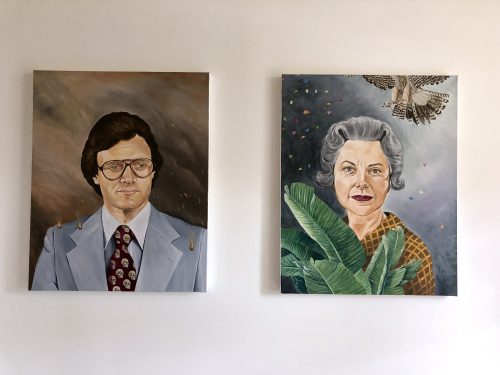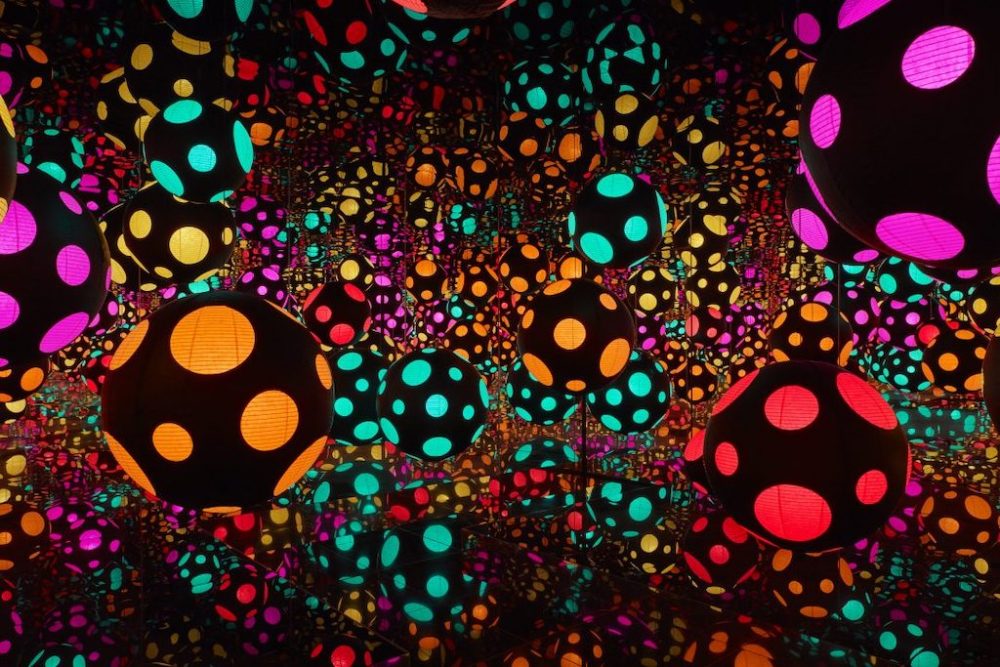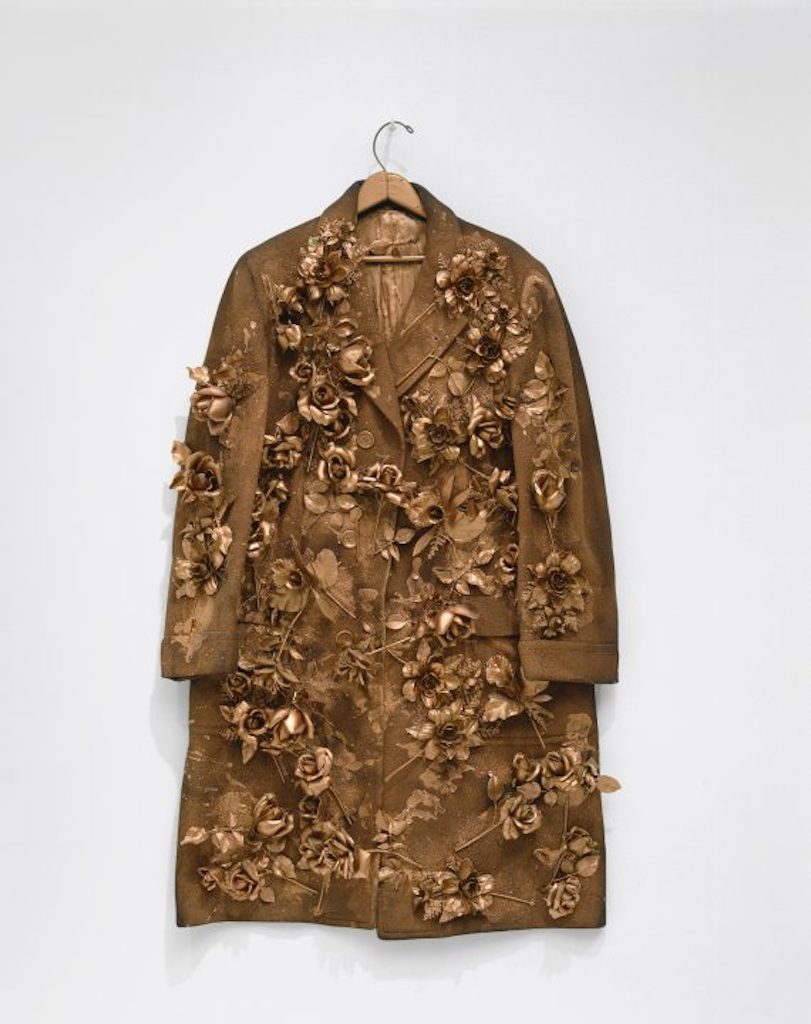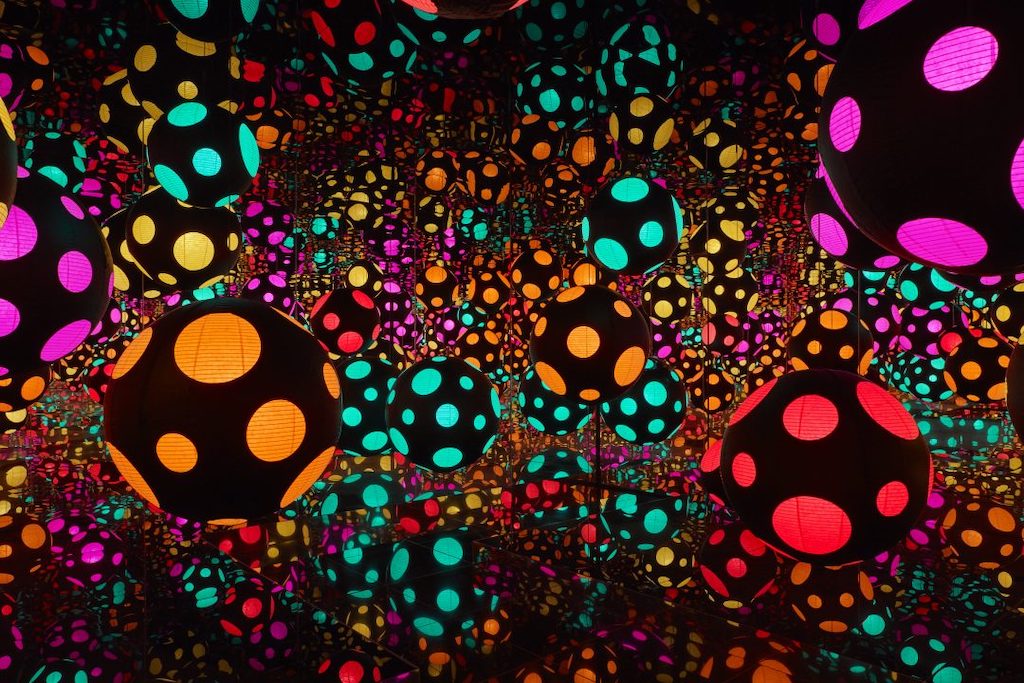After a two-year, Covid-related delay, One With Eternity, featuring five works by the beloved nonagenarian Yayoi Kusama, is now open at the Hirshhorn. And while the dazzling interiors of the two mirrored rooms on display will almost certainly be greeted by a riot of clicks, pics, and shares, this concise show isn’t merely empty spectacle. Look patiently, and you’ll be rewarded by real depth underneath the reflective surfaces.
“We anticipate,” the Hirshhorn states on its website, “that this will be a popular experience.” Well, that seems like a fair bet. In 2017, when the museum last undertook a show of Kusama’s work, an astounding 160,000 visitors turned out over 81 days (and the hashtag #InfiniteKusama turned up in more than 172 million Twitter and Instagram accounts). Prompted by that outpouring of interest, the Hirshhorn has since acquired three sizable works by the artist—and now it’s out to share them, by means of a free, timed-pass system that’s designed to keep the expected crowds manageable.
What to expect, then, if you do score a pass? Physically, this is a spare show. Staged in the museum’s basement, it features several largely empty spaces: an attempt, presumably, to allow some degree of social distancing. But there’s a subtler curatorial logic at work, as well. As assistant curator Betsy Johnson put it at a media preview, “one of the things we wanted to do was to focus a little bit more on her life and her biography.” Such a focus is clearest in the substantial timeline that spreads across two walls of an opening room, offering a fine-grained account of an artistic career that spans more than 70 years.











